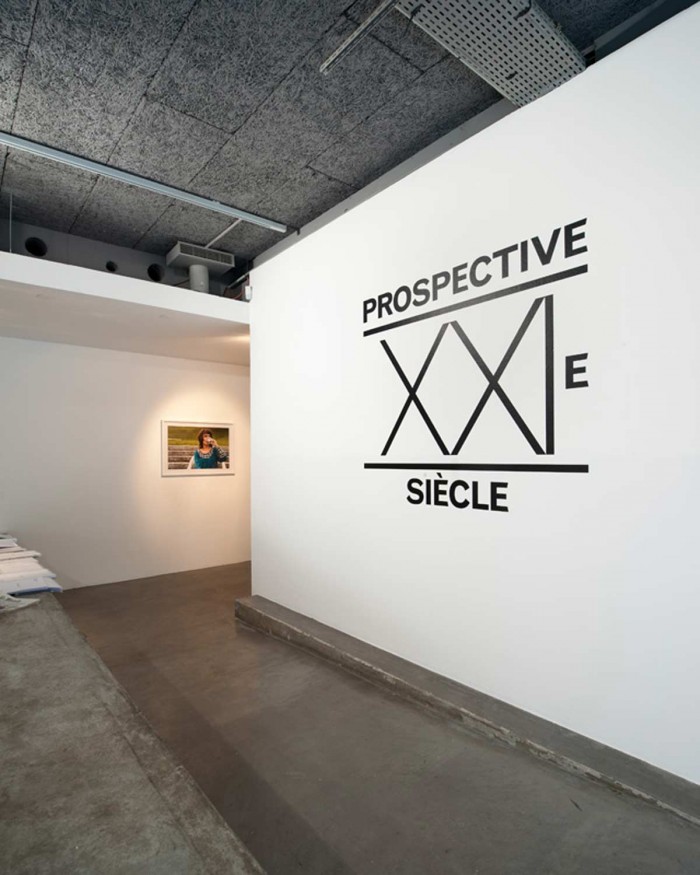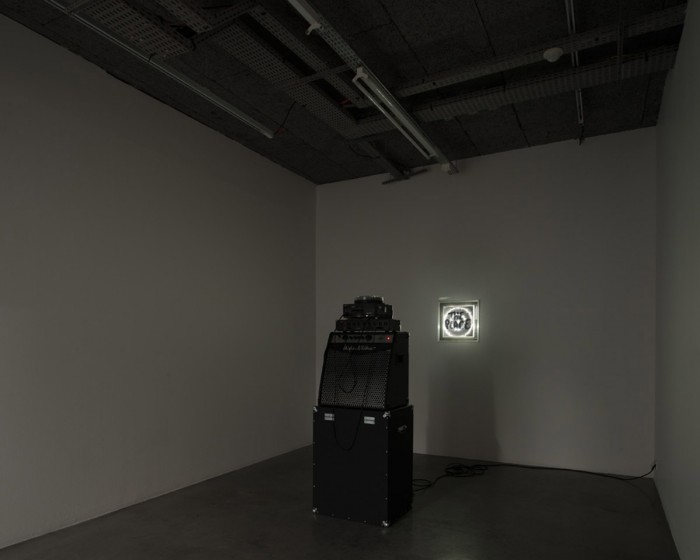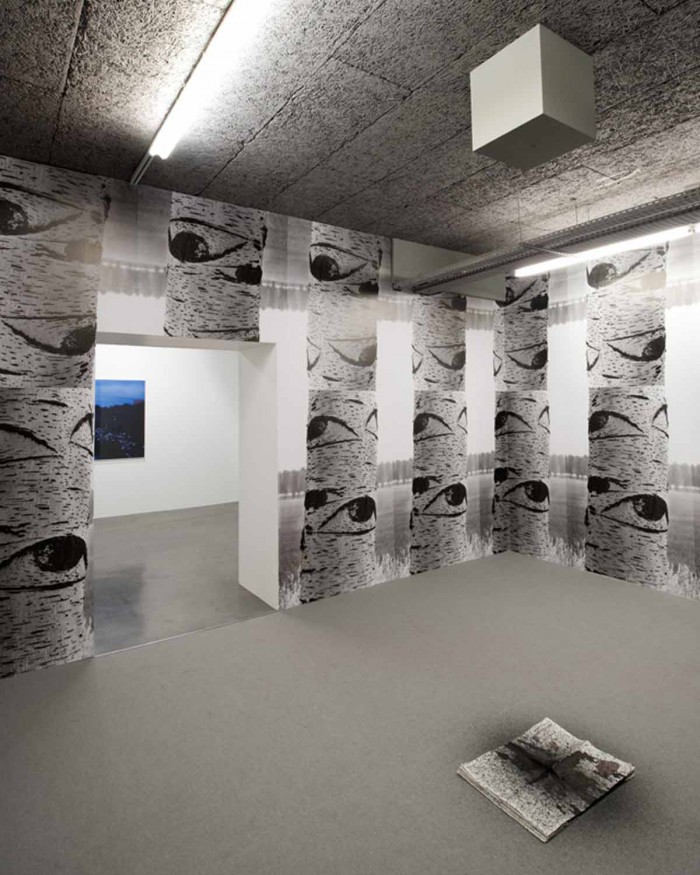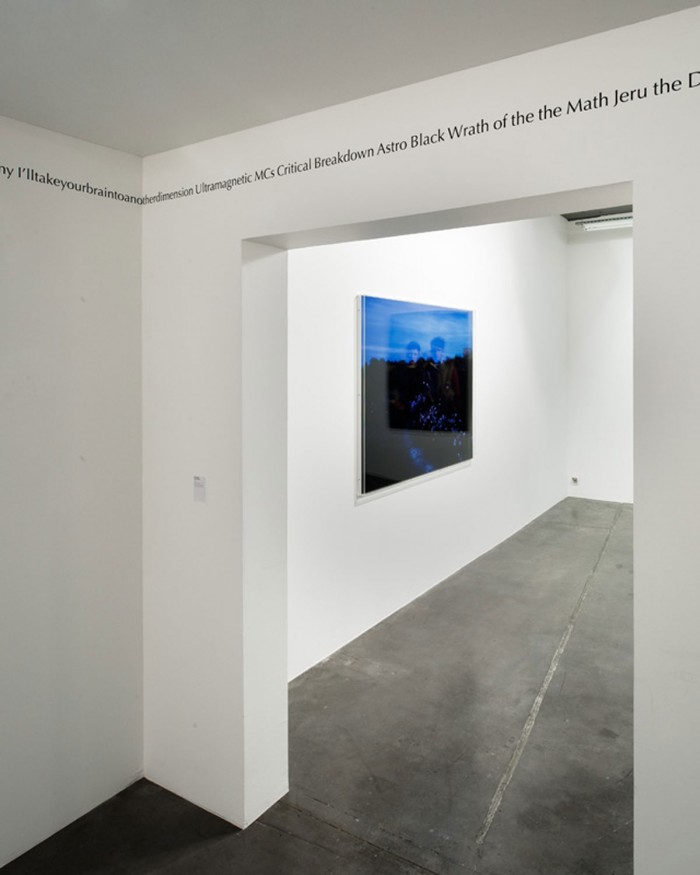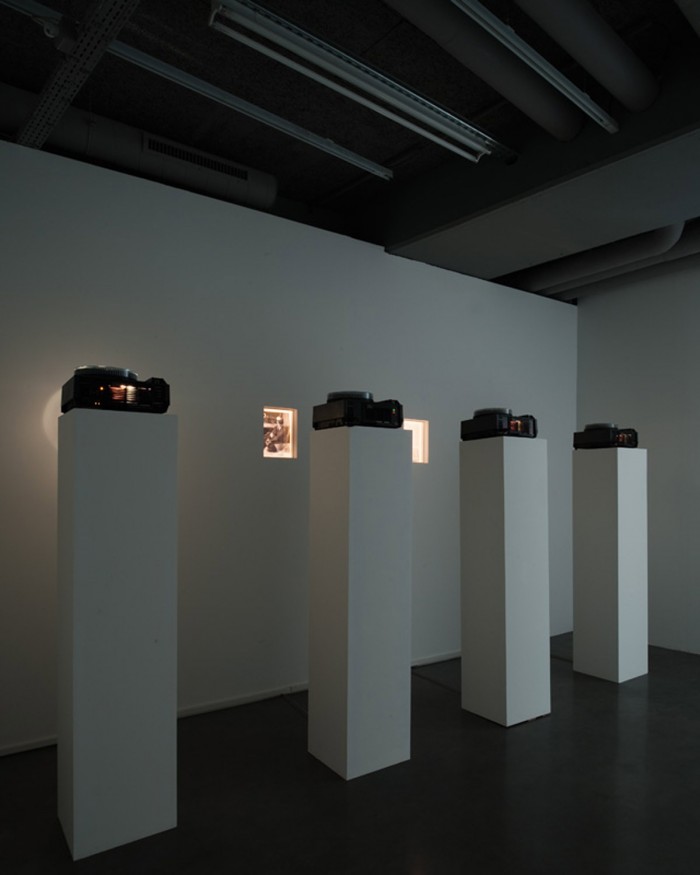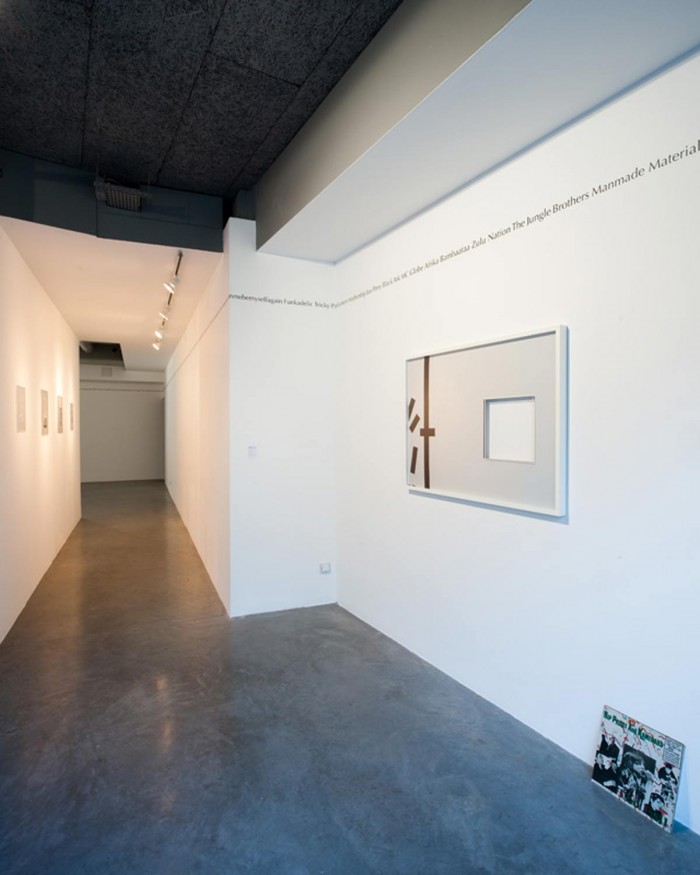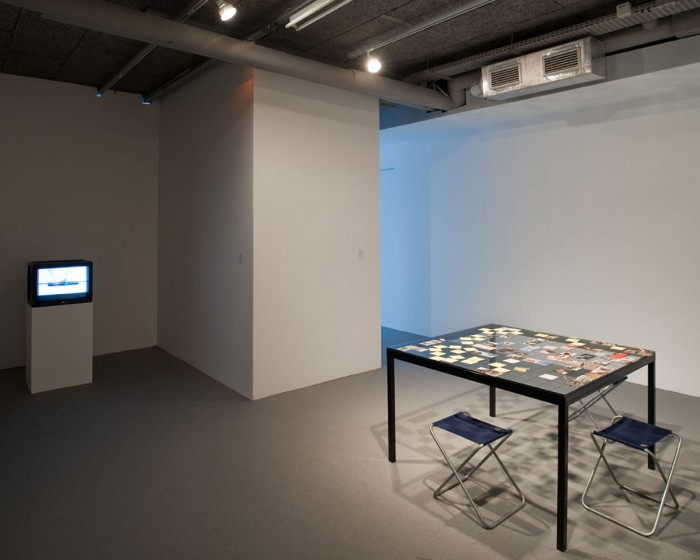Curator : Xavier Franceschi
With works from Pierre Bismuth/Michel Gondry, Jason Dodge, Elise Florenty, Michel François, Aurélien Froment, Ryan Gander, Mario Garcia Torres, Mark Geffriaud, Renée Green, Nate Harrison, Mark Leckey, Arnaud Maguet, Laurent Montaron, Bill Owens, Florence Paradeis, Emilie Pitoiset, Bruno Serralongue.
The intent of 21st Century Outlook, which has been devised and produced using our recent acquisitions, is to bring together a selection of works which, in very varied ways, broach and develop the issue of memory.
From Mario Garcia Torres’s exemplary What Happens in Halifax Stays in Halifax (2004) to Renée Green’s Personal Props (2001)—a piece borrowing the titles of some of the artist’s favourite songs–, and from Aurélien Froment’s revisited “Memory” (Table de rappel, 2010) to the remake of a photograph of Bill Owens by Florence Paradeis, by way of Ryan Gander’s evocation of Julian Schnabel’s film about Basquiat, involving an endless duplication with many different rebounds, each one of the works in 21st Century Outlook, in a link to a more or less remote past, focuses on a dimension of echo and repetition, which viewers are invited to experiment with in their turn.
This dimension, which actually entails a notion of rhythm and pace, refers very naturally to the musical sphere, and if a number of the pieces on view are determinedly part and parcel of this arena—whence Mark Leckey—and even make direct reference to certain precise sonic sources—Arnaud Maguet, Renée Green, Nate Harrison, Emilie Pitoiset…–, the echo conjured up is also that of a “minor piece of music” which, akin to a litany, re-enacts a past for us in a haunting way.
In this kind of context, and the desire to aim at nothing less than a compatibility between what the works suggest and the way they are presented—borrowing the general motif seems like a perfect necessity–, the spatial structure of 21st Century Outlook has been thought out right away so as to make itself the echo of the various ideas thus broached.
As it happens, the Plateau venue is completely divided into a series of small and almost identical rooms which each contain a single work or a series of works by the same artist: over and above the repetition that visitors physically grasp, and this scansion—this pace—that they are prompted to experience, the succession of these different chambers (the way we talk of “echo chambers”) calls to mind the compartments of our own memory, which must be activated. This play on space is based partly on Michel François’s work: one room, and all the features which go to make it, is entirely duplicated to produce, as its title indicates, a sense of déjà vu which is sufficient to create confusion in the spectator. For 21st Century Outlook, while, hitherto, the two identical areas came immediately one after the other like a three-dimensional Rorschach test, these are presented at a distance from each other, and if the echo thus becomes more distant, it underpins the general arrangement of the exhibition.
To be more precise, the system established borrows the principle of the work In Search of Brothers/A Force from the Past (2008) by Keren Cytter, which was shown here last year in the young Israeli artist’s solo show: a way of stimulating the memories of Le Plateau’s most faithful visitors…
In other respects, this concept and this principle of one room/one work express another decision: beyond the main thread thus proposed, to present each work in a perfect autonomy. And thereby remove any basically thematic dimension where works very often merely illustrate a pre-established idea. It is indeed the works on view which define 21st Century Outlook, and not the other way around. The thing is so true that it is precisely one of them—Arnaud Maguet’s—which, like a song for an album containing it, lends its title to the show for a reprise that is as appropriate as you can get. But the reprise does not stop there: 21st Century Outlook is also the name of a collection of experimental records from the early 1970s (which Maguet’s work explicitly incorporates) for a time-based game, a to-and-fro between past and present—or even a present that possibly turns out to be the achievement of a dreamed-of future—thus giving rise to as many resonances, and lively and particular echoes.
Slide show
